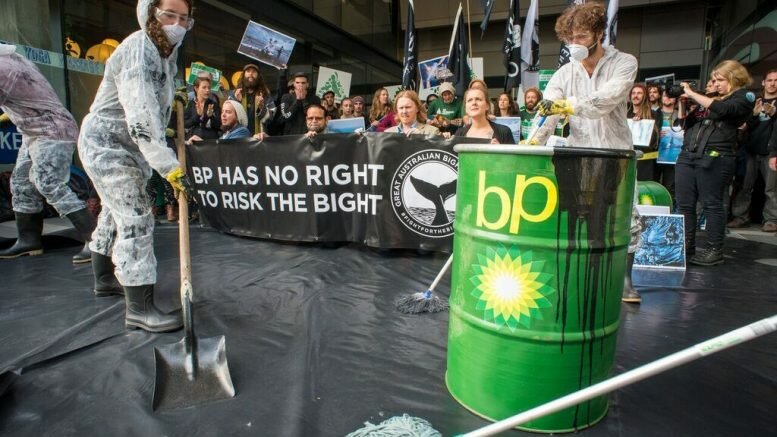Equinor should quit the Great Australian Bight
The Australian Wilderness Society in a press release urges Equinor to pull out of their involvement in the Great Australian Bight.
– Equinor should quit Great Australian Bight oil plans after Port Lincoln joins local Government revolt of 12 councils, according to the preservation society.
The main reasons for doing this are
- Equinor says it will not push through resistance if the company is not wanted
- 12 South Australian councils oppose Bight oil exploration, representing over 550,000 people
- Equinor rigs are not welcome; Equinor’s leading renewables technology is most welcome
The Norwegian oil giant Equinor should drop its plans to drill for oil in the Great Australian Bight after the City of Port Lincoln in September became the 12th South Australian local Government to vote its opposition to oil and gas exploration in Australia’s southern waters, representing 550,000 South Australians.
Follow BP and Chevron
An executive of Equinor, formerly Statoil, had previously told Port Lincoln councillors that it would not push through resistance if it was not wanted.
South Australia Director of the Wilderness Society, Peter Owen, said:
– Equinor said it would not push through resistance so it’s time the Norwegian oil giant listened to the elected representatives of half a million South Australians and drop its Bight plans like BP and Chevron did.
– The Port Lincoln vote is a massive blow to Equinor as it’s one of the region’s biggest ports and its fishing industry is an economic powerhouse for Australia.
– We said the community opposition would only grow even after the departure of BP and Chevron, and the opposition is escalating rapidly, with 12 South Australian local governments representing more than half a million residents now opposed, and an interstate council, Moyne in Victoria, demanding to be consulted over any oil and gas plans in the Bight.
– Will Equinor defy this huge community opposition and risk its reputation to push ahead with risky ultra-deepwater drilling in the pristine, deep and rough waters of the Great Australian Bight?
– We do not want Equinor’s oil rigs but we would welcome its world-leading technology to develop renewable energy in Australia.
Port Lincoln Council
The Port Lincoln Council motion states:
– The Council of the City of Port Lincoln stands with our local industries of fishing, aquaculture and tourism in expressing concern about the observed effects of seismic testing and the devastating consequences of a possible major oil spill, and we, therefore, declare our opposition to exploration and drilling for oil and gas in the Great Australian Bight.
Mr Owen went on to say:
– Six South Australian councils – including Port Adelaide and South Australia’s biggest council, Onkaparinga – have passed resolutions opposing oil and gas in the Bight since May when Kangaroo Island Mayor Peter Clements travelled to Statoil-Equinor’s annual general meeting in Norway to ask the oil giant to drop its Bight plans.
– In May more than a thousand people lined the shores across Australia to oppose offshore oil and gas exploration and calling Statoil-Equinor to drop its Bight plans at Hands Across the Sands events from New South Wales right across to Western Australia. About 500 people attended the Adelaide event at Semaphore Beach alone.
– The international Hands Across the Sand movement grew from the Deepwater Horizon disaster in 2010 when 800 million litres of oil spewed into the Gulf of Mexico.
– The Great Australian Bight waters are deeper, more treacherous and more remote than the Gulf of Mexico. BP’s own oil spill modelling showed a spill from an ultra-deepwater well blowout in the Great Australian Bight could impact anywhere along all of southern Australia’s coast, from Western Australia right across to Victoria through the Bass Strait to NSW and around Tasmania. A spill could hit Adelaide in 20 days and could hit Port Lincoln and Kangaroo Island in 15 days.
Devastating to fisheries
– A spill would be devastating for South Australia’s $442 million fishing industry and its tourism industries in coastal regions, worth more than $1 billion. The two industries employ more than 10,000 full-time positions.
– There is no established offshore oil and gas industry in South Australia to deal with a disaster. More than 6800 boats were involved in the Gulf clean-up but the South Australian Oyster Growers Association says that SA and neighbouring states probably have only 20 vessels that could operate safely in the waters where BP-Statoil planned to drill.
– The Great Australian Bight is a unique, pristine marine environment, with 85 per cent of its marine species found only in these waters. The Bight is a haven for 36 species of whales and dolphins, including the world’s most important nursery for the endangered southern right whale. The Bight is Australia’s most important sea lion nursery and supports seals, orcas, giant cuttlefish, great white sharks and some of Australia’s most important fisheries.
The South Australian councils opposing oil exploration in the Great Australian Bight are; Port Adelaide-Enfield, Port Lincoln, Kangaroo Island, Victor Harbor, Yorke Peninsula, Onkaparinga, Yankalilla, Holdfast Bay, Marion, West Torrens, Elliston and Alexandrina.
© The Australian Wilderness Society / #Norway Today





